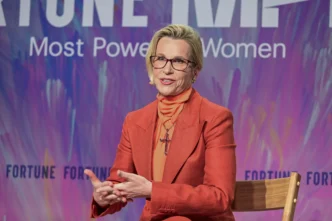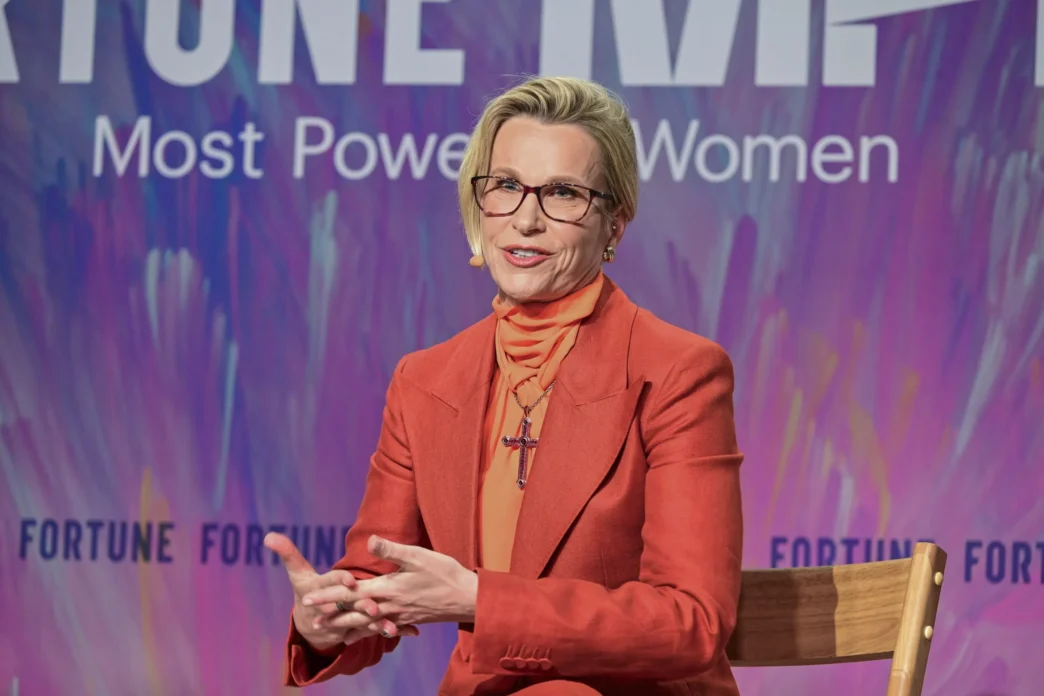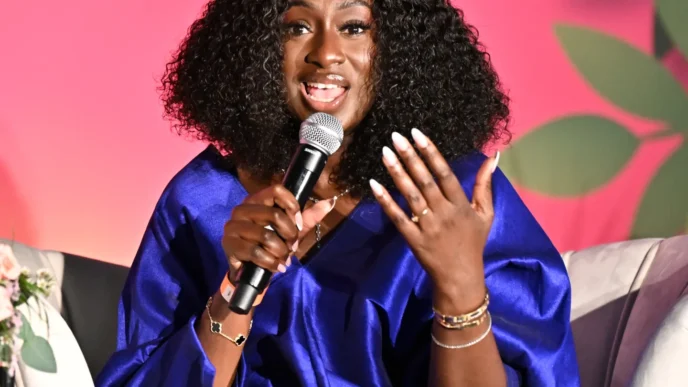Despite years of pledges, diversity campaigns, and boardroom promises, women remain strikingly underrepresented in Europe’s top corporate ranks. According to newly compiled data on Fortune 500 Europe companies, only 38 of the continent’s largest corporations are currently led by women — a figure that not only underscores the persistent gender imbalance in executive leadership but also masks an even deeper problem.
Five of those 38 women are already set to step down or have announced plans to leave their positions within the next year, meaning the actual number of female CEOs could soon fall below 7% among Europe’s corporate elite.
This reality paints a stark picture: even as female representation at lower and mid-management levels has grown steadily, the climb to the very top remains painfully slow — and increasingly fragile.
The Numbers Behind the Leadership Gap
Europe’s Fortune 500 — a list that ranks the continent’s largest companies by revenue — reflects a broad cross-section of industries from finance and energy to retail, pharmaceuticals, and technology. Yet when it comes to gender diversity at the highest level, progress appears almost stagnant.
Out of 500 companies, only 38 are led by female chief executives, compared to 37 last year and 34 the year before — an increase that is more incremental than inspirational.
Moreover, with five of those CEOs already announced to be departing — through retirements, term expirations, or corporate reorganizations — the ratio may fall back to levels seen nearly a decade ago.
In comparison, the U.S. Fortune 500 currently includes 53 female CEOs, itself a modest figure but still proportionally higher than Europe’s share.
Who Are Europe’s Female Leaders?
The women leading Europe’s corporate giants are among the most influential figures in global business. They include:
- Emma Walmsley of GlaxoSmithKline (GSK) — a trailblazer in pharmaceuticals, leading GSK’s transformation into a more innovation-driven health company.
- Allison Kirkby of BT Group — the first woman to helm the British telecom titan in its 180-year history.
- Margherita Della Valle of Vodafone — navigating one of Europe’s largest telecom restructurings.
- Ilham Kadri of Syensqo (formerly Solvay) — a strong voice in sustainability and industrial innovation.
- Helene Boulet-Supau of Showroomprivé — among the few female leaders in European e-commerce.
These women are not only CEOs but also symbols of progress, often having broken through deeply entrenched gender and cultural barriers within historically male-dominated industries. Yet the small number of such examples illustrates just how much ground remains to be covered.
Exits That Threaten Momentum
According to company disclosures and board statements, five female CEOs — including leaders from the financial, energy, and consumer goods sectors — are already slated to leave by mid-2026.
While some are retiring after long tenures, others are stepping aside as part of mergers, reorganizations, or performance-related transitions. The concern among gender-equality advocates is that few women appear to be in line to replace them.
“The real issue is not just how many women are in these roles now — it’s the weak pipeline behind them,” said a governance analyst at a leading European consultancy. “Once these CEOs leave, there’s no guarantee that their successors will be female, which risks undoing years of slow progress.”
Cultural and Structural Barriers Persist
Europe’s gender imbalance in corporate leadership is not simply a numbers problem — it’s a systemic issue rooted in long-standing cultural and structural barriers.
Experts cite several reasons why women remain underrepresented at the CEO level:
- Corporate traditions that favor internal networks and legacy hierarchies dominated by men.
- Limited access to P&L (profit and loss) roles, which are often considered prerequisites for CEO appointments.
- Work-life balance pressures, especially in countries where family leave or flexible work policies for senior roles remain inadequate.
- Bias in succession planning, where boards may unconsciously favor candidates who mirror the outgoing leader’s profile — usually male.
While Nordic countries such as Sweden, Finland, and Norway show relatively better gender parity, continental Europe and southern markets lag significantly behind.
Quota Policies Have Mixed Results
Several European governments and regulators have implemented gender quotas at the board level to push companies toward parity. France, for instance, requires that at least 40% of board members of large public companies be women — a policy that has succeeded in transforming board composition but has not yet translated into executive appointments.
Similarly, Germany and Italy have imposed mandates to increase the number of female board members, but progress in the CEO suite remains slow.
“Quotas help open the door,” said an EU Commission advisor on corporate diversity, “but they don’t guarantee that women will be given the keys to the top job.”
Indeed, many female executives still find themselves confined to roles like chief human resources officer or chief communications officer, which rarely serve as springboards to the CEO position.
Corporate Performance: The Case for Inclusion
Research consistently shows that gender-diverse leadership correlates with stronger performance, innovation, and employee satisfaction.
A 2024 McKinsey study found that companies in the top quartile for gender diversity on executive teams were 39% more likely to outperform their peers on profitability. Similarly, a Credit Suisse report noted that firms with female CEOs exhibited higher long-term return on equity and lower volatility.
Despite the evidence, boardrooms across Europe remain slow to act. Many companies continue to view gender diversity as a reputational or compliance issue, rather than a strategic advantage.
“Appointing more female CEOs isn’t just about fairness,” said one London-based investor. “It’s about unlocking untapped potential that drives business growth.”
The Next Generation: Is Change Coming?
There are promising signs that the next wave of female leaders is on the rise. Several European corporations — including Unilever, UBS, and TotalEnergies — have women in key succession-track roles such as CFO or COO.
Executive search firms also report an increase in female candidates being shortlisted for top roles, reflecting a slow but measurable cultural shift.
However, experts warn that unless boards and shareholders actively prioritize gender balance, the pace of change could remain glacial.
“Europe risks stagnating,” said the CEO of a diversity consultancy. “Without deliberate action, the number of female CEOs could actually decline before it grows again.”
Conclusion: A Fragile Progress That Demands Urgency
The fact that only 38 women lead Europe’s 500 largest companies — and that several are already preparing to leave — underscores how fragile gender progress remains at the top of corporate Europe.
Despite the rhetoric of equality and empowerment, the executive suite remains one of the final frontiers for gender parity.
Until companies move beyond tokenism, embrace inclusive succession planning, and dismantle structural biases, Europe’s boardrooms will continue to reflect a narrow slice of the population — rather than the diversity of talent and perspective that modern business demands.
In short: Europe’s corporate glass ceiling has cracked, but it hasn’t shattered. And unless change accelerates, the few women who’ve reached the top may soon find themselves alone again.
















